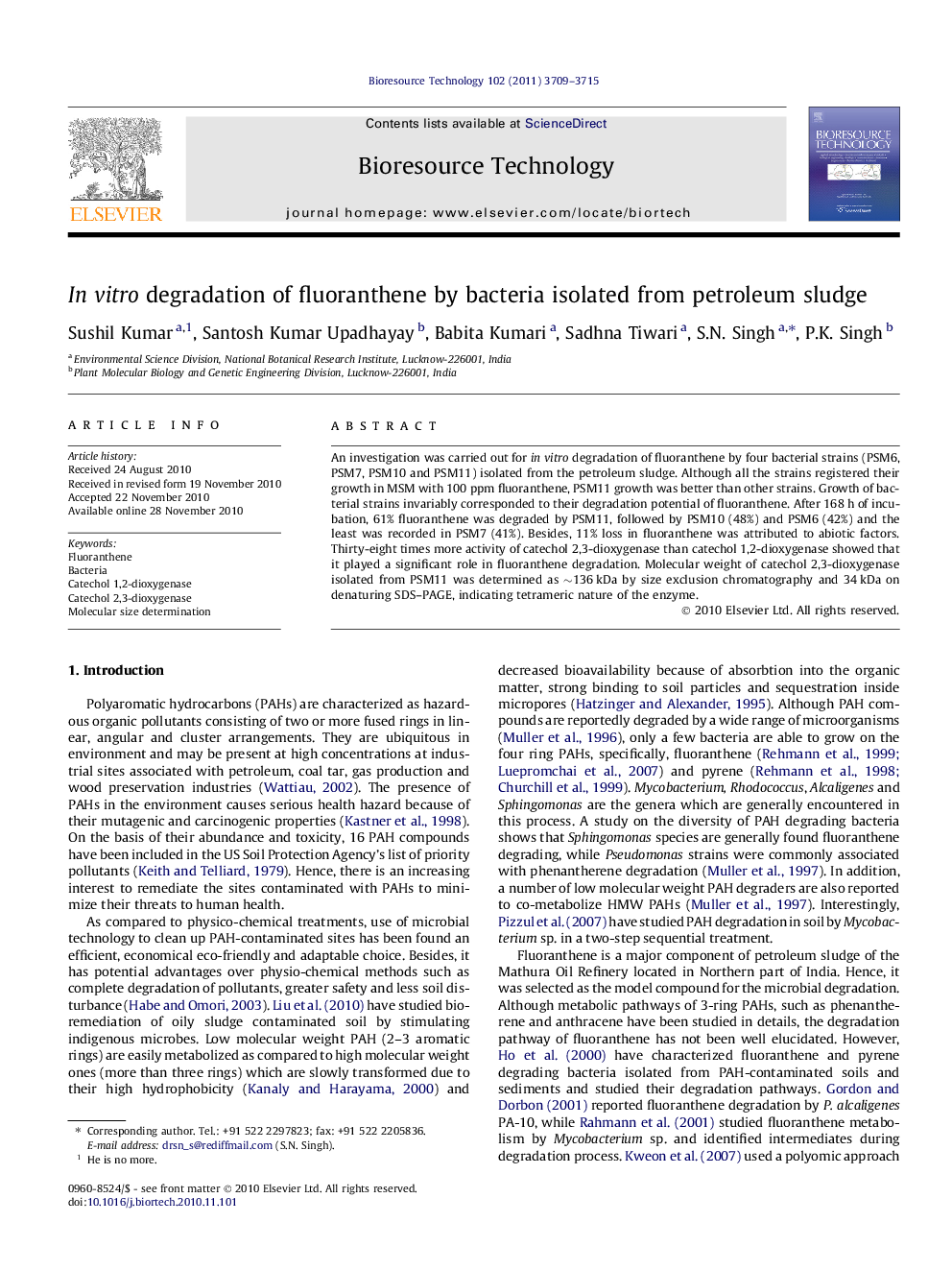| Article ID | Journal | Published Year | Pages | File Type |
|---|---|---|---|---|
| 10395419 | Bioresource Technology | 2011 | 7 Pages |
Abstract
An investigation was carried out for in vitro degradation of fluoranthene by four bacterial strains (PSM6, PSM7, PSM10 and PSM11) isolated from the petroleum sludge. Although all the strains registered their growth in MSM with 100Â ppm fluoranthene, PSM11 growth was better than other strains. Growth of bacterial strains invariably corresponded to their degradation potential of fluoranthene. After 168Â h of incubation, 61% fluoranthene was degraded by PSM11, followed by PSM10 (48%) and PSM6 (42%) and the least was recorded in PSM7 (41%). Besides, 11% loss in fluoranthene was attributed to abiotic factors. Thirty-eight times more activity of catechol 2,3-dioxygenase than catechol 1,2-dioxygenase showed that it played a significant role in fluoranthene degradation. Molecular weight of catechol 2,3-dioxygenase isolated from PSM11 was determined as â¼136Â kDa by size exclusion chromatography and 34Â kDa on denaturing SDS-PAGE, indicating tetrameric nature of the enzyme.
Related Topics
Physical Sciences and Engineering
Chemical Engineering
Process Chemistry and Technology
Authors
Sushil Kumar, Santosh Kumar Upadhayay, Babita Kumari, Sadhna Tiwari, S.N. Singh, P.K. Singh,
